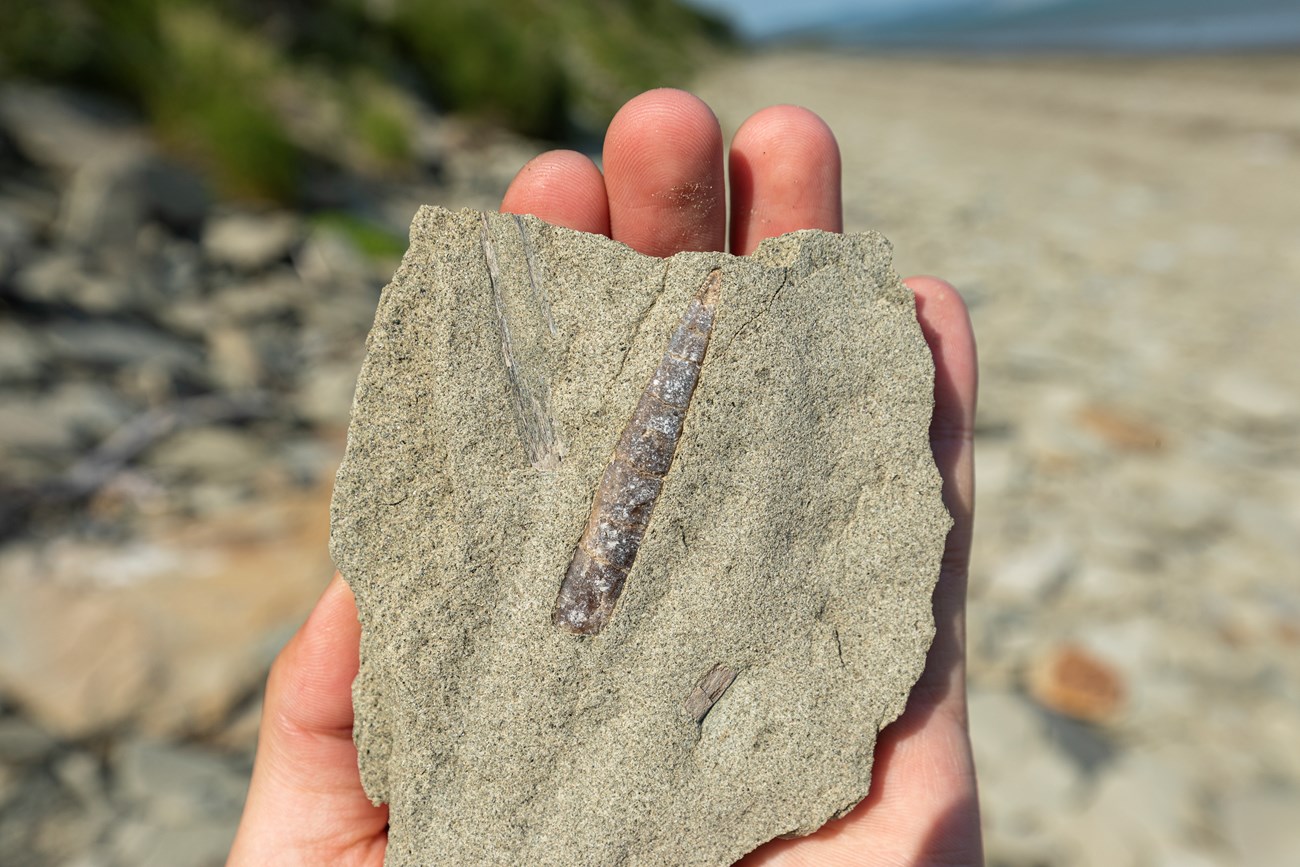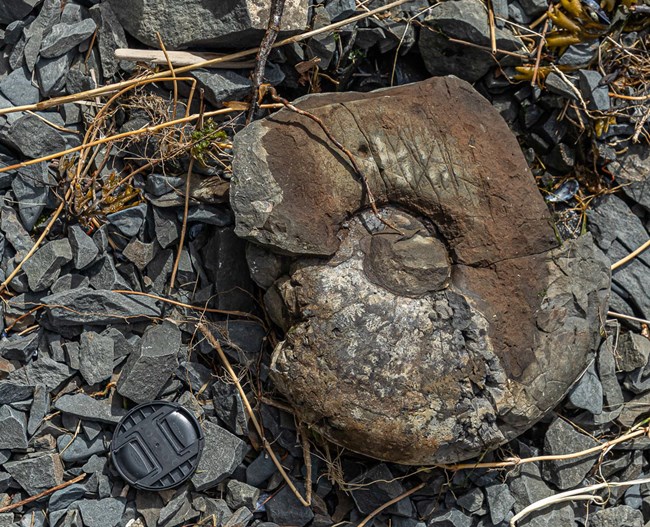
NPS Photo/M. Harrington Katmai's Fossils
Fossils & PaleontologyMany researchers journey into Katmai’s distant past to explore the park’s rich natural history through fossils. With a variety of fossilized plants, vertebrates, and invertebrates in the park, Katmai’s landscape tells a story that spans millions of years. Through fossils, the park can understand how the terrain and ecosystem has evolved over time. 
How old are Katmai’s fossils?A significant number of the fossils found across Katmai National Park & Preserve are part of the Naknek Formation, which is 160 – 146 million years old. The Naknek Formation is the largest geologic formation in Katmai, and it is from the late Jurassic Period. A wide variety of fossils have also been identified from other geologic periods, like the Cretaceous, which illustrates just how diverse and extensive Katmai’s natural history is. There is ongoing research in Katmai to locate, identify, and record fossils. This includes a search for dinosaur tracks, like those found in Aniakchak. Remember: If you see a fossil in the park, leave it where you found it so other visitors and future researchers can experience and learn about Katmai’s fascinating natural history. What types of fossils have been found?The list below details the types of fossils that have been identified at Katmai. 
Photo courtesy of S. Gage Bivalves
Gastropods
Scaphopods

NPS Photo/M. Harrington Cephalopods
Echinoderms
Crinoids
Brachiopods
Worms
Plants
Trace Fossils
* Naknek Formation (Jurassic) ** Kaguyak Formation (Cretaceous) *** Herendeen Formation (Cretaceous) p Pedmar Formation (Cretaceous) k Ketavik Formation (Paleocene to Eocene) |
Last updated: October 20, 2021
